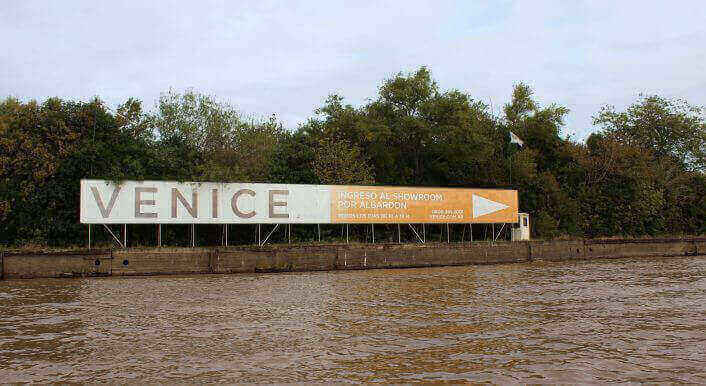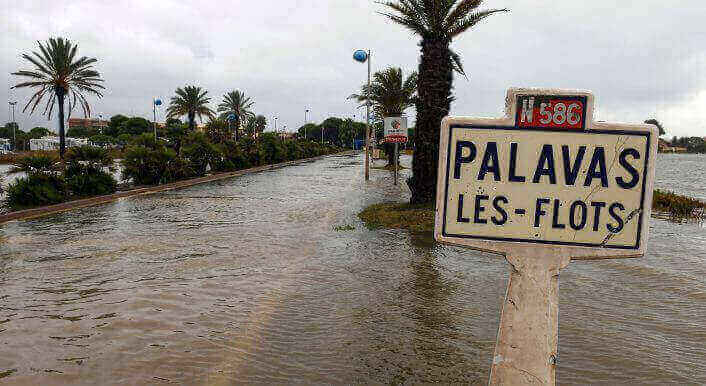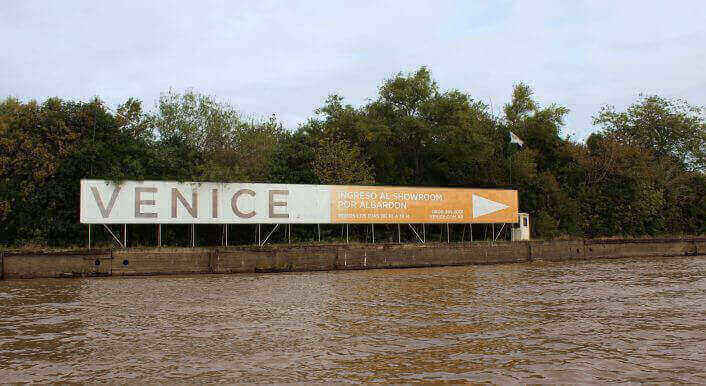How rising sea levels are changing the world
Climate change is altering the coasts of our planet: washing away sandy beaches, submerging islands and flooding plains. Our analysis of more than 700,000 tidal heights worldwide shows that climate change has long been a reality for the coastlines of the world. Hundreds of millions of people are affected.

In the past six months, CORRECTIV, together with journalists from seven countries, has been collecting a wealth of data and now, for the first time, is making it accessible to the public. Since 1933 a British organisation, the Permanent Service of Mean Sea Level (PSMSL), has collected the tidal heights at ports around the world. In more than 2,000 places, the British have set up meters and taken, from some of them, monthly readings.. It is the most illustrative method of measuring the effects of global climate change. Satellite-based measurements began only in 1993.
We have selected 500 places which are particularly well documented and mapped them globally. The map not only gives you a glimpse into the past — it also shows how the levels will change in the future. “Where the sea level has risen strongly, it will continue to rise strongly in the future,” says Anders Levermann, researcher for climate impact in Potsdam and New York. Levermann is the main author of the last world climate report of the Intergovernmental Panel on Climate Change (IPCC) and has set the course for a scientific consensus. Changing currents could influence the sea level locally, adds Levermann, but the global trend remains.
No continent will be able to escape the swelling waters. So the sea level in southern Marseille, France, is 10 centimeters higher today than it was 30 years ago. On the North Sea island of Borkum the difference is 6 centimeters — where in 1980 one could still stand with dry feet you need rubber boots today. The top ten most affected cities are mainly in Asia. The capital of the Philippines, Manila, for example, has levels that are 40 centimeters higher than 30 years ago.
At the same time, a surprising effect can be seen on our map: in the Scandinavian countries, the land is rising faster than the water. Some ports are literally high and dry. In the city of Vaasa in western Finland, the land has risen by almost ten centimeters according to our data, and in the town of Bodo in northern Norway by as much as 25 centimeters. The reason: the crust of the earth, which was previously compressed by ice sheets several kilometers thick, is still expanding after the melting of the glaciers.
The extent of the sea level rise depends on how much polar ice melts. The ice melt is difficult to predict: its speed depends on how much air is trapped in the ice, how dense the ice is, and how old. Water, in turn, warms up more slowly than air and stores heat for longer. Researchers led by Detlef Stammer at the Hamburg Institute for Oceanography are currently working on computer simulations which look at how various factors affect sea levels, such as solar radiation, man-made CO2 in the atmosphere, and the effect of aerosols. “In the end it proves to us that a prediction is extremely difficult,” says Stammer. What is certain is that the global trends will continue.
Researchers at the IPCC currently assume a global rise in sea levels between 20 and 80 centimeters by the year 2100. By the year 2200 or even 2300 it could be a few metres. An enormous range that will decide the lives of hundreds of millions of people. Recently, the forecasts have been revised upward by a considerable degree.
“The fact that the sea levels will rise even faster in the coming centuries is now an absolute consensus — and also that this is due to human-induced warming,” says climate impact researcher Levermann. However the researchers are in disagreement as to how much the ice caps at the poles will change. “We have most probably underestimated their influence so far.” According to Levermann if one day the ice sheets of Greenland completely melted, they alone would make global sea levels rise by seven meters.
Man has always lived on the coasts of this earth. To this day, cities near the water grow rapidly and attract twice as many people as those in the interior of the country. “The social, economic and political development of a country is concentrated on the coast,” says Derryl Colenbrand from Cape Town, South Africa. However our data – which is lacking across the continent – also attests to the economic isolation of Africa: tidal heights have only been recorded in South Africa and Zanzibar. Other ports were apparently not important enough for the British officials to measure their levels.
Our data also shows that climate change affects humanity differently. The sea is rising worldwide at an average of 3.4 millimetres a year, but wind, currents and waves influence the level regionally. In some regions, the sea level rises ten millimeters per year, three times faster than the global average.
What is certain is that the closer people live to the sea, the more they will suffer from climate change. Parts of the Philippines could cease to exist, as islands with their own languages and cultures sink. Millions of people in Bangladesh, one of the lowest countries on earth, are threatened. Broadly speaking, countries in the global South often don’t have sufficient resources to protect themselves from storms and floods. African countries for obvious reasons, prefer to invest in roads and hospitals rather than in dykes.
Wealthier states are better prepared. The devastating storm surge on the North Sea coast of Europe in 1953, for example, has led to better protection measures, which are still paying off. But European citizens will also have to leave their homes. As will the North Americans: as Storm Sandy tragically showed in New York, the US has not done enough to protect its coasts. There is a danger that the luxurious houses in the Rio Parana delta in Argentina will perish, and in the south of France, in Palavas-les-Flots, hotels and beach bars are under threat from floods.
In Japan, scientists are trying to breed coral reefs to build living barriers against the rising water with the help of nature. And there is one more piece of good news: Climate change is making mankind work on global solutions for the first time.
So what to do? What now? We would like to present five positions:
Laurence Tubiana was the French negotiator at the UN climate summit in 2015 and is now the CEO of the European Climate Foundation. Even though the euphoria has now subsided after the Parisian summit, Tubian still sees it as a signal of hope. International treaties mean that even the powerful coal industry is looking for alternatives.
Ottmar Edenhofer from the Berlin Mercator Institute hopes for a global CO2 tax. It would make climate-damaging energy forms such as coal expensive and thus unattractive. At the same time this could provide money for the victims of climate change.
There is another, previously little noticed solution, that was presented for the first time in Paris: a new agriculture. Because healthy, humus rich soil can store CO2.
CORRECTIV- climate expert Annika Joeres counts on enlightened and more frugal citizens: A climate friendly everyday life can be worth living for everyone.
And put the seas that are swelling worldwide into their place.



